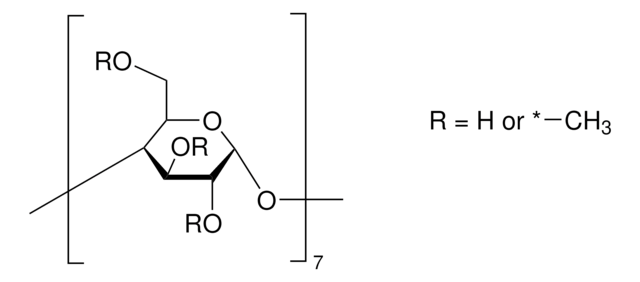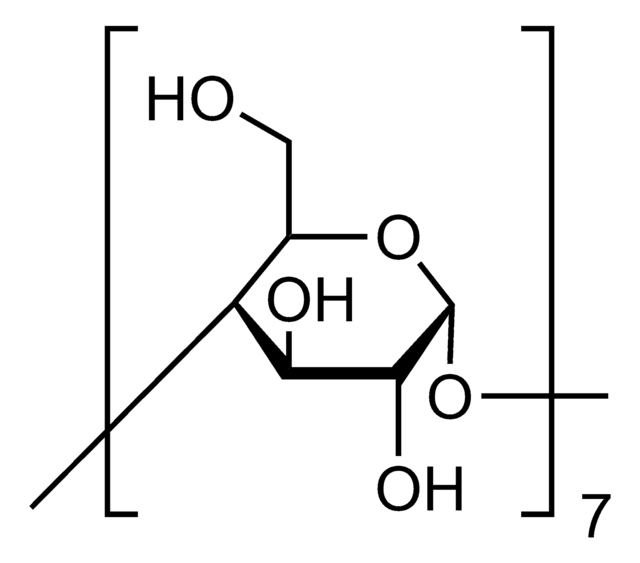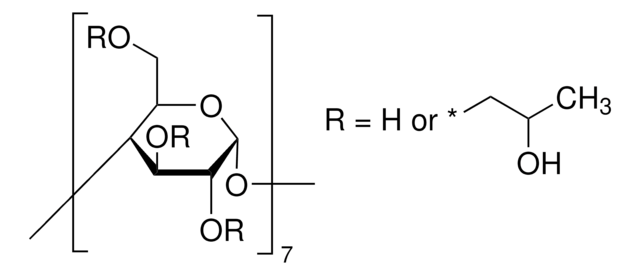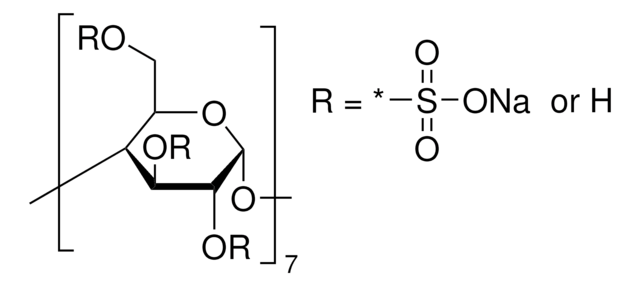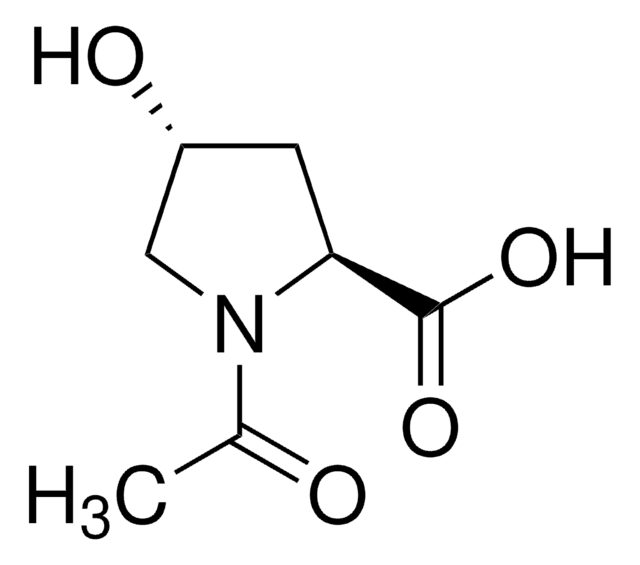779873
Methyl-β-cyclodextrin
Produced by Wacker Chemie AG, Burghausen, Germany, Life Science, ≥98.0% cyclodextrin basis
Synonym(s):
Cavasol® W7 M Life Science, MβCD, Methyl-beta-cyclodextrin
About This Item
Recommended Products
Assay
≥98.0% cyclodextrin basis
form
powder
optical activity
[α]/D 154.0 to 156.0°
mol wt
Mw 1310 g/mol
extent of labeling
1.7-1.9 molar substitution
impurities
≤0.10% unsubstituted cyclodextrin
≤0.20% chloride
≤0.50% reducing substances
≤50 ppm volatile organics
ign. residue
≤0.50%
loss
≤5.0% loss on drying
color
white to off-white
mp
180-182 °C (lit.)
absorption
≤0.10 at 350-600 nm in solution at 10%
≤1.00 at 220-350 nm in solution at 10%
SMILES string
O1C2OC(C(OC3OC(C(OC4OC(C(OC5OC(C(OC6OC(C(OC7OC(C(OC8OC(C1C(C8OC)O)COC)C(C7OC)O)COC)C(C6OC)O)COC)C(C5OC)O)COC)C(C4OC)O)COC)C(C3OC)O)COC)C(C2OC)O)COC
InChI
1S/C56H98O35/c1-64-15-22-36-29(57)43(71-8)50(78-22)86-37-23(16-65-2)80-52(45(73-10)30(37)58)88-39-25(18-67-4)82-54(47(75-12)32(39)60)90-41-27(20-69-6)84-56(49(77-14)34(41)62)91-42-28(21-70-7)83-55(48(76-13)35(42)63)89-40-26(19-68-5)81-53(46(74-11)33(40)61)87-38-24(17-66-3)79-51(85-36)44(72-9)31(38)59/h22-63H,15-21H2,1-14H3
InChI key
QGKBSGBYSPTPKJ-UHFFFAOYSA-N
Looking for similar products? Visit Product Comparison Guide
Application
Other Notes
Legal Information
Storage Class Code
11 - Combustible Solids
WGK
WGK 3
Flash Point(F)
368.6 °F
Flash Point(C)
187 °C
Regulatory Listings
Regulatory Listings are mainly provided for chemical products. Only limited information can be provided here for non-chemical products. No entry means none of the components are listed. It is the user’s obligation to ensure the safe and legal use of the product.
JAN Code
779873-100G:
779873-1KG:
779873-VAR:
779873-10KG:
779873-25KG:
779873-BULK:
779873-500G:
Choose from one of the most recent versions:
Already Own This Product?
Find documentation for the products that you have recently purchased in the Document Library.
Customers Also Viewed
Our team of scientists has experience in all areas of research including Life Science, Material Science, Chemical Synthesis, Chromatography, Analytical and many others.
Contact Technical Service